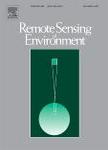版权所有:内蒙古大学图书馆 技术提供:维普资讯• 智图
内蒙古自治区呼和浩特市赛罕区大学西街235号 邮编: 010021

作者机构:Mankato State Univ Dept Geog Mankato MN 56001 USA Univ Minnesota Dept Forest Resources St Paul MN 55108 USA
出 版 物:《REMOTE SENSING OF ENVIRONMENT》 (环境遥感)
年 卷 期:2007年第106卷第3期
页 面:375-386页
核心收录:
学科分类:12[管理学] 0830[工学-环境科学与工程(可授工学、理学、农学学位)] 1201[管理学-管理科学与工程(可授管理学、工学学位)] 1002[医学-临床医学] 08[工学] 0816[工学-测绘科学与技术]
基 金:Department of Forest Resources and Agricultural Experiment Station, (MN-42-037) Department of Geography Minnesota State University University of Minnesota, UMN
主 题:impervious surface area land surface temperature normalized difference vegetation index spectral mixture analysis surface urban heat island Landsat TM/ETM
摘 要:This paper compares the normalized difference vegetation index (NDVI) and percent impervious surface as indicators of surface urban heat island effects in Landsat imagery by investigating the relationships between the land surface temperature (LST), percent impervious surface area (%ISA), and the NDVI. Landsat Thematic Mapper (TM) and Enhanced Thematic Mapper Plus (ETM+) data were used to estimate the LST from four different seasons for the Twin Cities, Minnesota, metropolitan area. A map of percent impervious surface with a standard error of 7.95% was generated using a normalized spectral mixture analysis of July 2002 Landsat TM imagery. Our analysis indicates there is a strong linear relationship between LST and percent impervious surface for all seasons, whereas the relationship between LST and NDVI is much less strong and varies by season. This result suggests percent impervious surface provides a cornplementary metric to the traditionally applied NDVI for analyzing LST quantitatively over the seasons for surface urban heat island studies using thermal infrared remote sensing in an urbanized environment. (c) 2006 Elsevier Inc. All rights reserved.